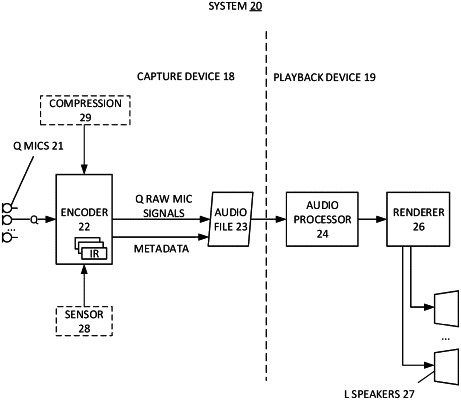| CPC G06F 16/683 (2019.01) [G06F 16/1744 (2019.01); H04R 1/406 (2013.01); H04R 3/005 (2013.01); H04R 2410/00 (2013.01)] | 20 Claims |

|
1. A method for processing audio comprising:
capturing, by a plurality of microphones of a capture device, a plurality of microphone signals;
generating metadata that is independent of the microphone signals, the metadata including;
an impulse response for each microphone of the plurality of microphones of the capture device, wherein each impulse response defines a response of an acoustic impulse between a sound source and a respective microphone, and
a distance between the sound source and the capture device;
compressing the metadata;
storing, in an electronic audio data file,
the microphone signals, and
the compressed metadata that is independent of the microphone signals; and
sending the electronic audio data file to a receiving device for the receiving device to use the impulse responses and the distance to spatially render the plurality of microphone signals.
|